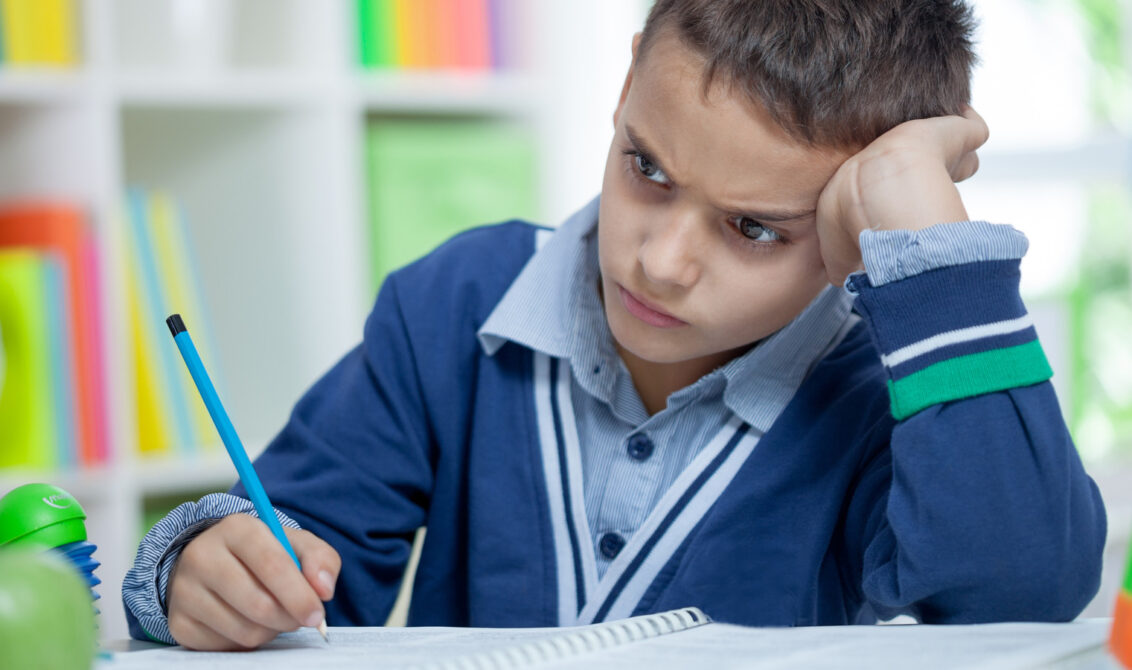
From a young child grappling with the task of tying their shoelaces, to a NASA engineer coding for a space mission – frustration tolerance is a key skill for navigating challenges in all aspects of life.
Let’s explore how frustration tolerance can help your students, why it’s essential in a learning environment, and how to build this skill at all ages.
What is frustration tolerance?
Frustration tolerance is not about suppressing or ignoring feelings of frustration, anger, or disappointment. Rather, it’s about recognising and processing these difficult emotions, and learning to deal with them in a positive and constructive way. By doing this, we can transform challenging experiences into valuable opportunities for personal growth and learning.
Why is frustration tolerance important?
Being able to tolerate frustration is an essential part of learning. No matter what skill students are struggling with – be that colouring inside the lines, or conjugating verbs in French – learning how to tolerate the frustration that comes with trying (and failing) helps them to build resilience and keep learning.
As students progress through their education, frustration tolerance becomes ever more crucial. A high level of frustration tolerance will help students as they grapple with challenging subjects and prepare for difficult exams. What’s more, the ability to tolerate frustration and setbacks will also help students to navigate their friendships and get along with peers and staff members.
So how can you help your students develop this skill? Let’s take a look at some strategies:
Seven ways to build frustration tolerance in your students
These activities aim to help your students build frustration tolerance and regulate their emotions while doing tasks in class.
With young learners:
1. Play turn-taking games
Engaging your students in board games that involve waiting for their turn can help them develop their patience and comprehension of turn-taking, as well as managing feelings of frustration while they wait. They will also learn the importance of attentive listening and following the rules.
Here are some examples of simple board games your students can play:
- Snakes and Ladders (aka. Chutes and Ladders)
- Guess Who?
- Connect Four (aka. Four in a Row)
2. Read stories about emotions and frustrated characters
Reading stories with your young learners is an effective way to help them identify and understand feelings of frustration. You can discuss the characters’ reactions and prompt your students to think about how they might deal with similar emotions and scenarios.
Some excellent books to explore with your students include:
- “Frustrated Ninja” by Mary Nhin: This book addresses common everyday scenarios that can lead to frustration in a child’s life. It offers practical strategies (e.g. drawing your feelings when you feel sad, moving your body when you feel excited, etc.) to help manage strong emotions.
- “Zog” by Julia Donaldson: “Zog” is a story of a clumsy dragon who attends Dragon School and strives to earn a gold star in his classes. Despite facing numerous challenges and mishaps during the story, Zog learns valuable lessons in perseverance, friendship, and the importance of helping others.
For older children:
3. Demonstrate how you can learn and understand something in different ways
Showing students that there are different ways to learn helps them manage frustration if they don’t grasp a concept immediately. They’ll understand that if one approach doesn’t work for them, they can try another.
Here’s an example of this for a science lesson about the water cycle:
- Start by verbally explaining the theory of the water cycle and showing diagrams.
- Then, ask your students to create a hands-on model of the water cycle. They can use materials like cotton for the clouds, a lamp for the sun, and a small tray for the water.
- In the next lesson, you can review what you covered previously by asking your students to role-play the water cycle. They can pretend to be clouds, the sun, the rain, and a river and act out the water cycle.
4. Do art projects with specific challenges
Set students the task of drawing or crafting something with specific restrictions, such as using only one colour, shape, or material. This approach nudges them to think creatively and manage their frustration when they cannot use the materials they want.
5. Set team-based problem solving challenges
Set up team-based activities like building a tower with limited items (such as straws, tape, or paper) or solving complex puzzles together. These tasks promote teamwork and teach students to navigate disagreements and frustrations when things don’t go as planned, encouraging mutual support.
For teenage students:
6. Organise peer teaching sessions
Take a step back and allow your students to teach something new to their classmates. For example, in an environmental science class, you might offer topics like climate change, renewable energy, ecosystems, and pollution. Each student or pair takes responsibility for becoming ‘experts’ on a topic. Encourage them to research using a mix of resources, from textbooks and articles, to documentaries and online platforms like YouTube. They must then prepare a short lesson plan and ensure that it includes key points on their subject, any activities they want their peers to do, and how they will present the information (e.g. posters, slideshows). Then, they teach the topic to their classmates.
This approach fosters patience and adaptability in your students. They will also learn to explain complex ideas in various ways, ensuring their peers can understand.
Also, you can try asking your students to solve riddles together. Exploring different approaches to solving the riddle keeps them engaged and increases their chances of finding solutions. TED-Ed offers a selection of fun riddles like the bridge riddle for older students and teenagers.
7. Role-play difficult situations
As well as a way of teaching topics, role play can also be a valuable tool for students to rehearse responses to various scenarios.
For example, your older students could role-play a disagreement with a friend. With younger students, consider role-plays involving sharing or resolving common classroom conflicts.
Engaging in such role-plays help your students develop empathy and problem-solving skills, equipping them with the tools to navigate real-life situations effectively.
How you can be a good role model for your students
Your students are more observant than you might think, often looking to adults to learn emotional regulation. When you encounter frustrating situations, it’s a prime opportunity to model effective coping strategies.
Imagine, for instance, that the projector isn’t working during your lesson. Instead of bottling up your frustration, vocalise it constructively with phrases like, “I’m feeling frustrated, I’ll take a few deep breaths”, or “I’m frustrated, but let’s find another way to show the diagram”.
By handling the situation calmly and resourcefully, you’re not just solving a problem; you’re showcasing emotional regulation in action. Depending on your students’ age and familiarity with emotional regulation techniques, you can engage them by asking, “I’m feeling frustrated, what should I do?”. This interactive approach reinforces coping strategies like counting or deep breathing.
Further reading
For additional resources on emotional regulation, growth mindset, and strengthening resilience in your students, take a look at the articles below.
How to teach your students emotional regulation
How to embed a growth mindset in the classroom
Five ways to build resilience in students
How reading helps students deal with stress and uncertainty
Subscribe to our blog
If you’d like to stay up to date with our latest articles, why not subscribe to our blog? You’ll get a fortnightly roundup of the articles you’ve missed straight to your inbox, plus links to free teaching resources.

